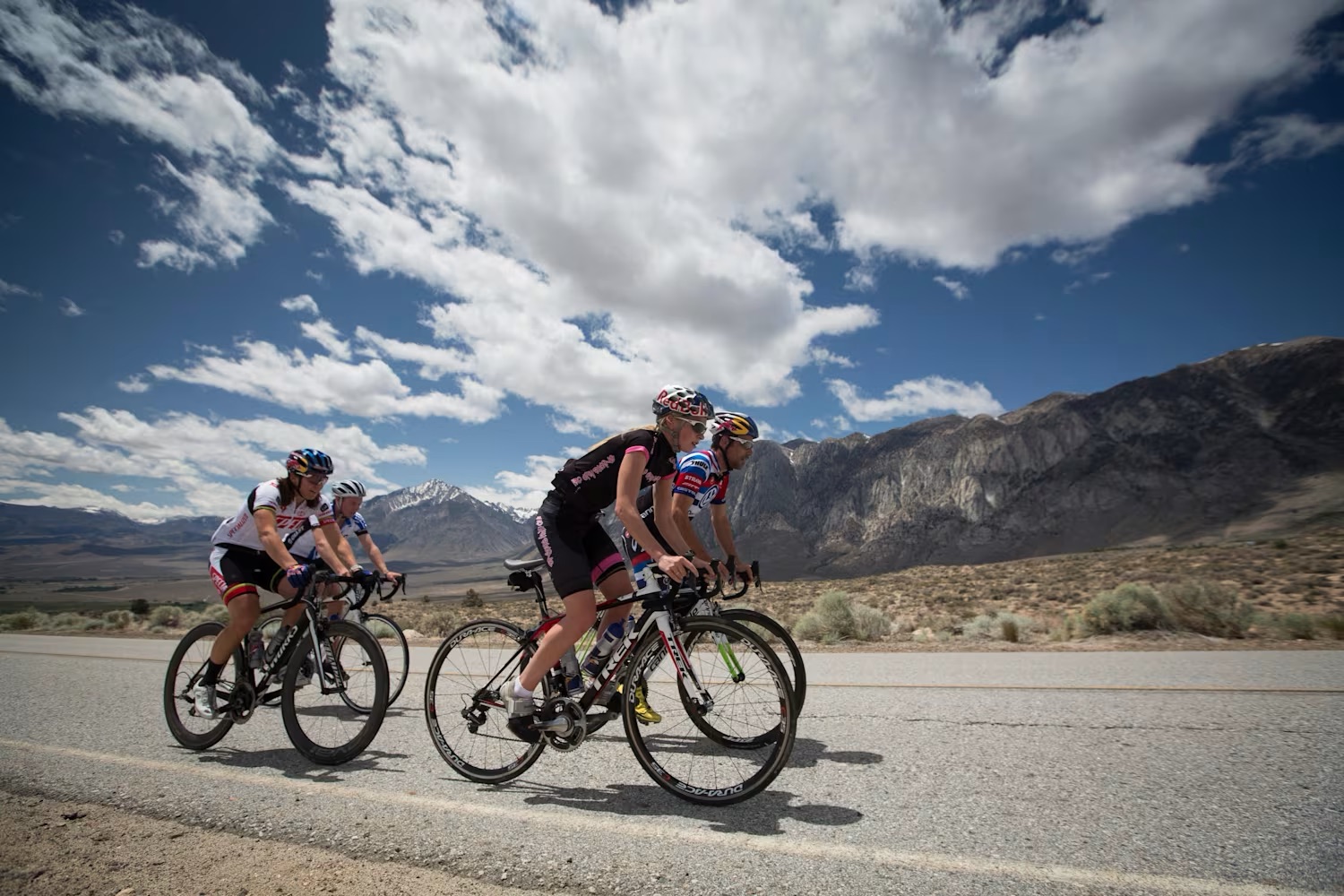In endurance sports, effectively managing your nutrition and hydration is essential for achieving optimal performance and preventing fatigue. This article provides practical strategies for fueling your body before, during, and after long rides and runs, ensuring you maintain energy levels and support recovery. By understanding your energy needs, choosing the right fuels, timing your nutrition, and implementing effective hydration practices, you can enhance your endurance and improve your overall athletic performance.
Whether you’re a seasoned athlete or just starting your endurance journey, these insights will help you make informed decisions that support your training goals and keep you performing at your best.
In this article you will find:
Understanding Energy Needs for Endurance Activities
When it comes to endurance activities such as long-distance running or cycling, understanding your energy needs is crucial for optimizing performance and preventing fatigue. As you push your body over extended periods, knowing how to fuel your energy reserves effectively can mean the difference between success and hitting the dreaded wall.
The Basics of Energy Production
Your body requires a consistent supply of energy to sustain physical activity, particularly during endurance events. This energy comes primarily from carbohydrates, fats, and to a lesser extent, proteins. The balance of these macronutrients and how your body utilizes them depends on several factors:
- Duration of Activity: The longer the activity, the more your body will rely on fat stores, especially after glycogen stores (the body’s quick-access energy source) begin to deplete.
- Intensity of Exercise: Higher intensity workouts predominantly use glycogen, while lower intensity activities can utilize fat more effectively.
- Fitness Level: Well-trained athletes tend to have a greater capacity to utilize fat as a fuel source, sparing glycogen for when it’s most needed.
Determining Your Energy Requirements
To effectively fuel your endurance activities, it is essential to determine your individual energy requirements. Here’s how to calculate it:
- Calculate Basal Metabolic Rate (BMR): This is the number of calories your body needs at rest. Various online calculators can help you determine this based on age, weight, height, and gender.
- Factor in Activity Level: Use an activity multiplier to adjust your BMR based on your training schedule. For endurance athletes, this can range from 1.5 to 2.5 times your BMR, depending on training intensity and volume.
- Adjust for Goals: If you’re looking to lose weight, create a calorie deficit; if you want to gain muscle or improve performance, ensure you’re in a slight surplus.
Recognizing Signs of Energy Deficiency
It’s vital to listen to your body and recognize signs that you might not be fueling adequately:
- Fatigue: Persistent tiredness can indicate depleted energy reserves.
- Decreased Performance: Struggling to maintain your usual pace or strength during workouts can signal inadequate fueling.
- Increased Cravings: Intense cravings for carbohydrates can indicate your body’s need for more energy sources.
If you notice these signs, it might be time to reassess your fueling strategy. Ensure you’re consuming enough calories, focusing on quality nutrients, and timing your intake correctly around your workouts.
The Role of Glycogen in Endurance
Glycogen is the stored form of glucose and serves as a vital energy source during prolonged activities. Your body can store a limited amount of glycogen, which is why knowing how to replenish these stores is essential:
- Pre-Workout Carbohydrate Loading: In the days leading up to a long ride or run, increase your carbohydrate intake to maximize glycogen stores.
- Intra-Workout Nutrition: For activities lasting over 90 minutes, consider consuming carbohydrates during the event through energy gels, chews, or drinks.
- Post-Workout Recovery: After your workout, consume a meal rich in carbohydrates and proteins to replenish glycogen stores and promote muscle recovery.
By understanding your energy needs and how to manage your fuel effectively, you can enhance your endurance performance and stave off fatigue during long rides and runs. This foundational knowledge will prepare you to explore the next step in your endurance journey—choosing the right fuels for optimal performance.
For more detailed guidance on fueling strategies, consider checking out this resource which dives deeper into the nutritional aspects of endurance training.
Choosing the Right Fuels for Optimal Performance
When it comes to endurance activities, the fuel you choose can significantly impact your performance. Selecting the right sources of energy not only helps you maintain stamina but also aids in recovery and overall well-being. Understanding the various options available and how they affect your body can empower you to make informed decisions that enhance your endurance experience.
The Importance of Carbohydrates
Carbohydrates are often dubbed the primary fuel source for endurance athletes, and for good reason. They are easily converted into glucose, which your body uses for energy during prolonged activities. Here’s why carbohydrates should be at the forefront of your fueling strategy:
- Quick Energy Source: Carbohydrates provide immediate energy, which is crucial during high-intensity efforts.
- Glycogen Storage: By consuming adequate carbohydrates, you can maximize glycogen stores, allowing for sustained energy during long rides or runs.
- Recovery Aid: Post-exercise carbohydrate intake is essential for replenishing glycogen levels and aiding in muscle recovery.
Consider incorporating a variety of carbohydrate sources into your diet, including:
- Whole Grains: Foods like brown rice, quinoa, and whole-grain bread offer complex carbohydrates that provide lasting energy.
- Fruits: Bananas, berries, and apples are not only rich in carbohydrates but also packed with vitamins and minerals.
- Starchy Vegetables: Sweet potatoes and corn are excellent sources of carbohydrates that can fuel your workouts.
Incorporating Fats for Endurance
While carbohydrates are critical for quick energy, fats play a vital role in endurance activities, especially during longer sessions. Fats are a concentrated source of energy and can sustain you when glycogen stores are low:
- Energy Density: Fats provide more than double the calories per gram compared to carbohydrates, making them an efficient fuel source for long-duration efforts.
- Fat Adaptation: Training your body to utilize fat as a primary energy source can help conserve glycogen and improve endurance.
To incorporate healthy fats into your diet, consider adding:
- Nuts and Seeds: Almonds, walnuts, and chia seeds are great sources of healthy fats and also provide protein and fiber.
- Avocado: Rich in monounsaturated fats, avocado can help with satiety and nutrient absorption.
- Oils: Olive oil and coconut oil can be used in cooking or as dressings to add healthy fats to your meals.
Timing Your Fuel Intake
Choosing the right fuels is just one part of the equation; timing is equally important. Proper nutrient timing can enhance your performance and recovery:
- Pre-Workout: Aim to consume a carbohydrate-rich meal or snack 2-3 hours before your activity. This allows for optimal digestion and energy availability.
- During Activity: For workouts lasting over 90 minutes, consider consuming easily digestible carbohydrates, such as gels, chews, or sports drinks, every 30-45 minutes.
- Post-Workout: Within 30 minutes after your exercise, consume a mix of carbohydrates and protein to promote recovery and replenish glycogen stores.
Personalizing Your Fuel Strategy
Every athlete is different, and what works for one person may not work for another. Experimenting with various fuel sources and timing strategies during your training can help you discover what works best for your body. Keep a training journal to track your nutrition, energy levels, and performance to refine your approach.
For a deeper dive into fueling strategies tailored to endurance sports, check out this article from Runner’s World, which provides valuable insights into optimizing your nutrition for long runs.
With the right fuels and proper timing, you can set yourself up for success in your endurance activities, ensuring you perform at your best and enjoy every moment on your journey.
Timing Your Nutrition for Maximum Energy
In the world of endurance sports, the timing of your nutrition can be just as crucial as the types of foods you consume. Properly timed nutrition can enhance your performance, optimize energy levels, and accelerate recovery. Understanding how to strategically plan your meals and snacks around your training sessions can help you maximize your endurance potential.
Pre-Workout Nutrition
Fueling your body before a workout sets the foundation for your performance. The right pre-workout nutrition can help you feel energized and ready to tackle your training. Here are some key considerations:
- Timing: Aim to eat a balanced meal containing carbohydrates, protein, and fats about 2-3 hours before your workout. This allows for digestion and energy availability.
- Snack Option: If you’re short on time, a small snack 30-60 minutes prior can suffice. Focus on easily digestible carbohydrates, such as a banana or a slice of toast with honey.
- Hydration: Don’t forget to hydrate! Ensure you drink water or an electrolyte-rich beverage before your workout to prevent dehydration.
Example pre-workout meals might include:
- Oatmeal topped with berries and a dollop of nut butter
- Greek yogurt with honey and granola
- A smoothie made with banana, spinach, and protein powder
During Workout Nutrition
For endurance activities lasting longer than 90 minutes, it’s essential to provide your body with energy during the workout. This can help prevent fatigue and maintain performance:
- Carbohydrate Intake: Consuming 30-60 grams of carbohydrates per hour is recommended to keep glycogen stores replenished. Options include sports drinks, gels, or energy chews.
- Timing: Aim to start fueling after the first 30 minutes of exercise and continue at regular intervals (every 20-30 minutes) to sustain energy levels.
- Electrolytes: Include electrolytes in your nutrition plan to replace lost sodium, potassium, and other minerals through sweat, especially in longer sessions.
Post-Workout Nutrition
After completing your workout, the focus shifts to recovery. Consuming the right nutrients post-exercise can help repair muscles and replenish glycogen stores:
- Timing: Aim to consume a meal or snack within 30-60 minutes after your workout for optimal recovery.
- Carbohydrate and Protein Balance: A ratio of 3:1 or 4:1 carbohydrates to protein is often recommended. This aids in muscle recovery and glycogen replenishment.
- Hydration: Rehydrate with water or electrolyte drinks to restore fluid balance.
Some great post-workout options include:
- Grilled chicken with quinoa and steamed vegetables
- A protein shake with a banana and a scoop of peanut butter
- Cottage cheese with pineapple and a handful of nuts
Listening to Your Body
While guidelines can provide a framework for timing your nutrition, it’s essential to listen to your body. Everyone’s nutritional needs and responses can vary significantly. Here are some tips for personalizing your approach:
- Monitor Energy Levels: Pay attention to how different foods and timings affect your performance and energy levels during workouts.
- Adjust as Needed: Don’t be afraid to tweak your pre-, during-, and post-workout nutrition based on your training intensity and duration.
- Experiment: Use your training sessions to experiment with different foods and timing strategies to find what works best for you.
For additional insights on nutrition timing and its impact on performance, consider exploring this resource which delves deeper into fueling strategies for endurance athletes.
By mastering the timing of your nutrition, you can unlock your potential and ensure that your body is primed for peak performance during every workout.
Hydration Strategies to Sustain Long Distances
Hydration is a critical aspect of endurance performance that is often overlooked. Staying properly hydrated can significantly enhance your stamina, reduce fatigue, and improve recovery. Understanding how to effectively manage your hydration strategy during long rides and runs is essential for maintaining peak performance.
The Importance of Hydration in Endurance Activities
When engaging in prolonged physical activity, your body loses fluids through sweat and respiration. This loss can lead to dehydration, which negatively impacts your performance, cognitive function, and overall well-being. Here are some reasons why hydration should be a priority:
- Regulates Body Temperature: Adequate hydration helps maintain your body temperature, preventing overheating during intense exercise.
- Supports Joint Health: Water lubricates your joints, reducing the risk of injury and discomfort.
- Enhances Performance: Even mild dehydration can lead to decreased endurance, slower reaction times, and reduced strength.
Understanding Your Hydration Needs
Hydration needs vary from person to person and can depend on factors such as body weight, climate, exercise intensity, and duration. Here’s how to assess your individual hydration needs:
- Pre-Exercise Hydration: Ensure you start your workout well-hydrated. Aim to drink 16-20 ounces (about 500-600 mL) of water 2-3 hours before your activity.
- During Exercise: For sessions lasting longer than 60 minutes, aim to drink 7-10 ounces (about 200-300 mL) every 10-20 minutes. For high-intensity efforts, consider incorporating electrolyte-rich beverages.
- Post-Exercise Hydration: Replenish fluids lost during exercise by drinking 16-24 ounces (about 500-700 mL) for every pound lost during your workout.
Choosing the Right Hydration Sources
While water is essential, sometimes it isn’t enough for endurance activities, especially in hot conditions. Here are some hydration options to consider:
- Water: The best choice for short to moderate workouts. Always have water accessible during training and events.
- Electrolyte Drinks: Ideal for long-distance activities, these drinks help replace lost electrolytes and provide carbohydrates for energy. Look for options with sodium, potassium, and magnesium.
- Sports Gels and Chews: Many endurance athletes find it beneficial to consume gels or chews that include electrolytes alongside their hydration strategy.
Signs of Dehydration
Recognizing the signs of dehydration is crucial for maintaining performance. Common symptoms include:
- Thirst: A clear signal that your body needs fluids.
- Dark Urine: Dark yellow urine indicates dehydration; aim for light yellow or clear urine as a hydration goal.
- Fatigue and Dizziness: Feeling unusually tired or lightheaded can be a sign of dehydration, particularly during exercise.
Personalizing Your Hydration Strategy
To optimize your hydration strategy, consider the following tips:
- Experiment During Training: Use your training sessions to test different hydration strategies and see what works best for you.
- Monitor Weather Conditions: In hotter climates, increase your fluid intake to compensate for increased sweat loss.
- Listen to Your Body: Pay attention to how you feel during and after workouts. Adjust your hydration plan based on your body’s signals.
For more detailed insights into hydration strategies tailored for endurance athletes, consider checking out this article from Runner’s World, which provides valuable guidance on sustaining hydration during long-distance activities.
By implementing effective hydration strategies, you can enhance your endurance, improve recovery, and enjoy your long rides and runs to the fullest. In endurance sports, proper nutrition timing and hydration are critical for optimizing performance and recovery. Pre-workout meals should include a balance of carbohydrates, protein, and fats consumed 2-3 hours before exercise, while quick snacks like fruits can be eaten closer to workout time. During long sessions, athletes should aim to ingest 30-60 grams of carbohydrates per hour and hydrate regularly with water or electrolyte drinks. Post-workout, a meal high in carbohydrates and protein within 30-60 minutes is essential for replenishing energy stores.
Hydration is equally important, as even mild dehydration can impair performance. Athletes should drink water 2-3 hours before exercise and continue to hydrate during workouts, especially those lasting over an hour. Recognizing signs of dehydration, such as dark urine and fatigue, is crucial. By personalizing hydration strategies and using a mix of water and electrolyte-rich beverages, endurance athletes can maintain peak performance and enhance recovery during long rides and runs.




